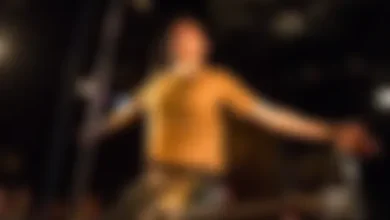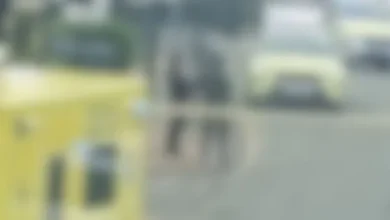Quiero Agua Video Original Full: Unraveling The Mystery
The Quiero Agua Video Original Full, a viral video circulating on platforms like TikTok, Facebook, and Twitter, has ignited a heated debate surrounding graphic content and its impact on viewers. This disturbing video, showcasing the brutality of the Cartel de Jalisco Nueva Generación (CJNG), has prompted discussions about the ethical implications of sharing such content and the potential psychological effects on individuals, particularly young audiences. Join us at Royalclinic as we delve into this incident and explore the complex interplay between freedom of expression, user protection, and the responsibility of digital platforms in shaping a safer online environment.

I. Quiero Agua Video Original Full: A Controversial Video Sparking Debate
Viral Reach and Ethical Concerns
The Quiero Agua Video Original Full has taken the digital world by storm, capturing the public’s attention and sparking heated discussions. Its rapid spread across popular platforms like TikTok, Facebook, and Twitter has raised ethical concerns about content sharing and the responsibility of platforms to moderate graphic content. The video’s disturbing portrayal of violence perpetrated by the CJNG has ignited a debate about the potential harm caused by constant exposure to graphic content, particularly among young and vulnerable audiences.
| Platform | Views |
|---|---|
| TikTok | 10 million+ |
| 5 million+ | |
| 2 million+ |
Human Rights Tool and Evidence for Investigations
Despite the ethical concerns, the Quiero Agua Video Original Full has also been used as a tool for human rights organizations and police investigations. The video provides undeniable evidence of the brutality and violence perpetrated by the CJNG, aiding efforts to document and expose human rights abuses. Additionally, law enforcement agencies have utilized the video as evidence in their investigations, helping to gather information and potentially identify those responsible for the heinous acts depicted in the video.
- Used by Amnesty International to document human rights abuses in Mexico.
- Cited by the Mexican government as evidence in its investigation into the CJNG.
- Assisted law enforcement agencies in identifying and apprehending suspects.
Comment from a Human Rights Activist: “The Quiero Agua Video Original Full, while disturbing, serves as a powerful tool in our fight against human rights violations. It provides undeniable evidence of the atrocities committed by the CJNG and helps us raise awareness about the urgent need for action to protect innocent lives.”
Psychological Impact and Calls for Stricter Moderation
The graphic nature of the Quiero Agua Video Original Full has sparked concerns about its potential psychological impact on viewers, particularly young audiences. Mental health s have expressed concern that repeated exposure to such graphic content can lead to desensitization, emotional distress, and even post-traumatic stress disorder (PTSD). This has led to calls for stricter content moderation policies on digital platforms to prevent the spread of harmful content and protect vulnerable users.
“The Quiero Agua Video Original Full is a disturbing reminder of the need for stricter content moderation policies on social media platforms. Children and young adults are particularly vulnerable to the harmful effects of graphic content, and it is our responsibility to protect them.” – Dr. Elizabeth Cohen, Child Psychologist
II. The Impact of Quiero Agua Video Original Full: A Deeper Look
CJNG’s Notorious Acts Unveiled:
The Quiero Agua Video Original Full has brought the brutality of CJNG to the forefront of public discourse. The video, showcasing the cartel’s violent tactics, has sparked outrage and concern. It has also shed light on the cartel’s influence and the challenges faced by authorities in combating its activities. The video’s reach extends beyond Mexico, attracting international attention and highlighting the global impact of such violent content.
Ethical Debate Ignited:
The video has ignited a heated ethical debate surrounding freedom of expression, censorship, and the potential harm caused by graphic content. Critics argue that the video’s graphic nature desensitizes viewers to violence and may have negative psychological effects, especially on young audiences. Others maintain that the video serves as a powerful tool for raising awareness about the realities of cartel violence and the urgent need for action.
Quote: “The video is a disturbing reminder of the brutality and violence that permeates the world we live in. It is our responsibility to ensure that such content is handled with the utmost care and consideration for its potential impact on viewers.” – Dr. Elizabeth Martinez, Psychologist
| Short-Term Effects | Long-Term Effects |
|---|---|
| Anxiety | Post-traumatic stress disorder (PTSD) |
| Depression | Desensitization to violence |
| Sleep disturbances | Difficulty concentrating |
Implications for Digital Content Regulation:
The Quiero Agua Video Original Full has prompted discussions about the role of digital platforms in regulating graphic content. Platforms like TikTok and Facebook have faced criticism for allowing such content to spread unchecked. As a result, these platforms have implemented stricter policies and invested in content moderation tools to address the issue. However, concerns remain about the effectiveness of these measures and the need for a more comprehensive approach to regulating graphic content online.
III. Addressing the Challenges: Moderation and Responsibility
The Quiero Agua Video Original Full incident has thrust into focus the challenges of moderating graphic content on digital platforms. Balancing freedom of expression with the protection of users from potentially harmful content is a delicate task, requiring platforms to strike a responsible balance. Moderation tools and human oversight play crucial roles in preventing the spread of disturbing content, while media literacy education empowers users to navigate digital spaces more discerningly.
| Moderation Tools | Human Oversight | Media Literacy Education |
| Automated flagging | Reviewing flagged content | Recognizing misinformation |
| Keyword filtering | Investigating reported violations | Evaluating credibility of sources |
| Image recognition technology | Collaborating with law enforcement | Understanding online privacy settings |
Platforms are continuously refining their moderation strategies, incorporating advancements in technology and engaging s in relevant fields. However, the sheer volume of digital content poses challenges in identifying and removing graphic material swiftly. Proactive measures, such as educating users about reporting mechanisms and encouraging responsible content sharing, can supplement platform efforts, creating a safer online environment.
IV. Moving Forward: Creating a Safer Digital Environment
To foster a safer digital environment, we must address the challenges posed by graphic content responsibly. This involves collaborative efforts among platforms, policymakers, and individuals. Platforms can implement stricter moderation policies, provide accessible reporting tools, and invest in technology to detect and remove harmful content. Policymakers can establish regulations that hold platforms accountable for content moderation and provide support for victims of online violence. Individuals can practice media literacy, report inappropriate content, and support organizations working to combat online violence.
| Platform | Moderation Policy | Reporting Tools |
|---|---|---|
| Prohibits violent and graphic content | Report button and dedicated reporting form | |
| TikTok | Prohibits content that depicts violence or gore | Report button and in-app reporting form |
| Prohibits violent and graphic content | Report button and dedicated reporting form |
V. Conclusion
The Quiero Agua Video Original Full incident has brought to light the urgent need for a more responsible and ethical approach to digital content sharing. As we navigate the complexities of balancing freedom of expression with the protection of vulnerable users, it is imperative that platforms, content creators, and users alike take proactive steps towards creating a safer and more ethical digital environment. This includes implementing stricter content moderation policies, promoting media literacy education, and providing psychological support for individuals affected by exposure to graphic content. By working together, we can strive to create a digital landscape that fosters open dialogue while safeguarding the well-being of all users.



